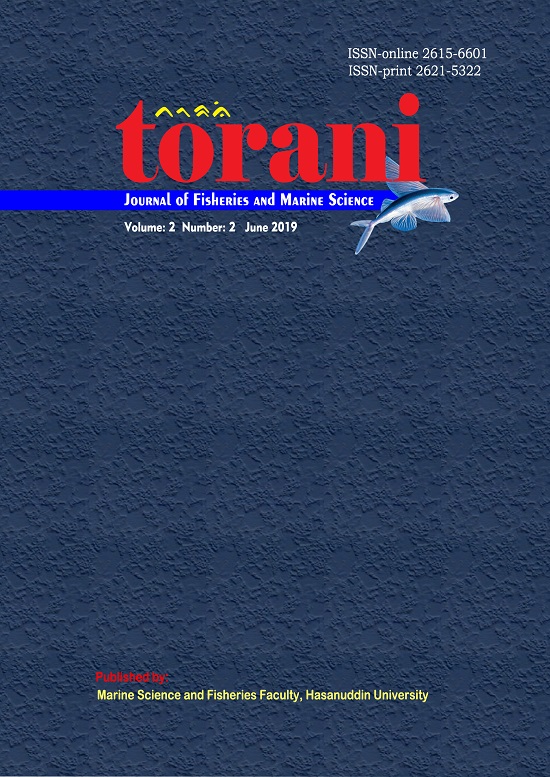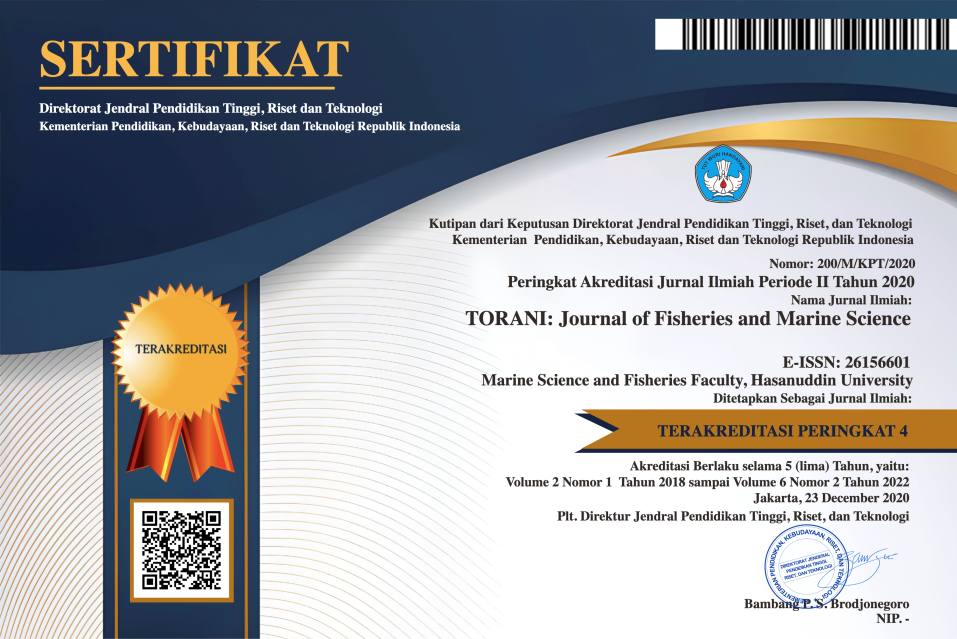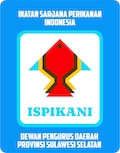Study of aquatic plants and ecological- physics Tempe Lake, Sulawesi Selatan
DOI:
https://doi.org/10.35911/torani.v2i2.7060Abstract
Aquatic plants are an indicator of the fertility of an aquatic region. The waters of Lake Tempe are the largest waters of the lake area in South Sulawesi. Lake Tempe is located in the western part of Wajo District, precisely in Tempe District, about 7 km from Sengkang City towards the banks of the Walanae River in southern Sulawesi. The area is about 13,000 ha with a maximum depth of 5.5 m and can reach more than 30,000 ha during floods, and during the dry season, the inundation area reaches only 1,000 ha with a maximum depth of 1 m, located above the continental and Australian and Asian plates. This lake is one of the tectonic lakes in Indonesia. Every year silting the lake occurs. The Tempe hydro vegetation and eco-physical research were carried out in October 2017. The purpose of this study was to record aquatic plant species that live in Tempe Lake and observe ecological changes and physical properties of Lake Tempe. Aquatic plants are expected to be able to filter lake water. The results obtained are physical conditions of sharp-smelling water, unpleasant taste, dark brown, and cloudy color. Chemical indicators of NH3-N waters (0.2976-0.0634), PO4-P (0.0172-0.0844) NO2-N (undetectable), NO3-N (1.7131-1.9335), Sulphate (27.761900 - 37.047620), DO (6.88-7.18) and pH (7.88-8.02). There are 14 species of aquatic plants found in these waters. The most dominant species is water hyacinth. In the case of Tempe lake water vegetation results in siltation of the lake area.Keywords: Aquatic plant, Biodiversity, Species, Tempe lake,Downloads
References
Ali MSS, Majika A, Salman D. 2017. Food Consumption and Production in Tempe Lake, South Sulawesi, Indonesia. J. Asian Rur. Stud. 1(1): 43-52
Bappedal kabupaten Wajo. 1999. Penataan Aktivitas Masyarakat Dalam Rangka Pengendalian Kerusakan Dan Pemulihan Lingkungan Perairan Danau Tempe, Sulawesi Selatan. Draf. Laporan Akhir Bappedal Regional III. Kabupaten Wajo.
Bappedal kabupaten Wajo, 2006. Danau Tempe Wajo, Penghasil Ikan Air Tawar Terbesar di Dunia. http://bappeda.wajokab.org/index.php/profil/98-program-prioritas/sosial. Akses Maret 2018.
Dinas Kelautan dan Perikanan Kabupaten Wajo. 2005. Laporan tahunan Kelautan dan Perikanan Kabupaten Wajo. Kabupaten Wajo.
Hermawan FK, Krisbandono A, Hakim M A, Suriadi A, Mahida M, Hartati DM. 2015. Policy Brief: Pemetaan Sosial Ekonomi Dan Lingkungan: Mendukung Pengembangan Kawasan Dan Konservasi Ekosistem Danau Tempe Sulawesi Selatan. Jakarta Selatan: Pusat Litbang Kebijakan dan Penerapan Teknologi Badan Litbang Kementerian Pekerjaan Umum dan Perumahan Rakyat.
Julzarika A dan Dewi E K. 2017. Laporan litbang identifikasi sumber daya perairan darat (15 danau prioritas). Pusfatja LAPAN, Jakarta.
Marjuki B. 2016. Pendangkalan Danau Tempe Sulawesi Selatan (1981 – 2015) dan Upaya Konservasi Sumber Daya Air. Setjend Kementerian PUPERA, Jakarta
Nasrul RY. 2016. Keanekaragaman ikan air tawar di perairan danau Tempe. Skripsi universitas Islam Negeri Alauddin Makassar. 87pp.
Pance R, Saraffah A, Manurung H, Harahap, T N, Retnowati I, Nasution S R, Rustadi WC. 2014. Gerakan Penyelamatan Danau (GERMADAN) Tempe. Jakarta: Kementerian Lingkungan Hidup.
Pelras C. 2005. The Bugis. Nalar bekerjasama dengan Forum Jakarta-Paris.
Pelras C. 2006. Manusia Bugis. Jakarta : Forum Jakarta-Paris EFEO.
Surur F. 2015. Strategi Adaptasi Nelayan Terhadap Perubahan – Perubahan Ekologis Danau Tempe di Desa Pallimae Kecamatan Sabbangparu Kabupaten Wajo. Plano Madani, 4 (1), 91-102.
Trisakti B dan Julzarika A. 2011. Laporan litbang pemanfaatan penginderaan jauh untuk sumber daya perairan darat, studi kasus: Danau Limboto dan Danau Tempe. Pusfatja LAPAN. Jakarta.
Unru AB. 2010. Pengelolaan Sumber Daya Ikan di Danau Tempe. Kabupaten Wajo: Dinas Kelautan dan PerikananKabupaten Wajo.
Van Bemmelen RW. 1949. The Geology of Indonesia, Martinus Nyhoff, The Haque, Nederland.



















